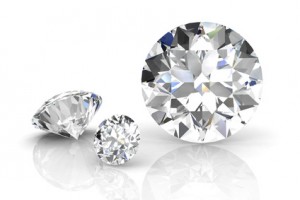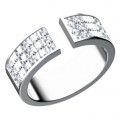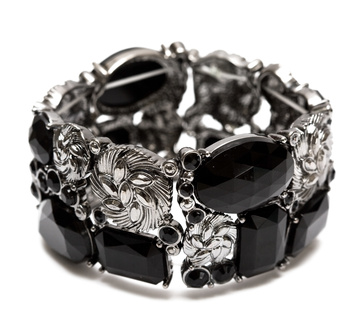What Does “I” Clarity Mean?
Diamond clarity is judged by the position and size of the flaws within and on the surface of the stone.

“I” clarity is a good choice if you are looking to save some money.
According to the G.I.A. (Gemological Institute of America), there are six main grades of diamond clarity (from highest to lowest): Flawless (FL), Internally Flawless (IF), Very Very Slightly Included (VVS), Very Slightly Included (VS), Slightly Included (SI) and Included (I).
The diamond clarity grade “I” is the lowest on the scale, but there are a lot of stones with this rating, whereas high-clarity diamonds are relatively rare.
There are three sub-grades in this clarity range: I1, I2 and I3.
How to Recognize an I-Clarity Diamond?
To be classified as an I-clarity diamond, a stone needs to have one or more inclusions clearly visible under 10x magnification. They are also very likely to be visible with the naked eye when looking at the diamond from the top.
The difference between this grade and the higher ones is that a stone rated SI or higher will not usually have clearly visible inclusions. They could be visible under 10x magnification, but he higher the grade, the more difficult they are to notice.
(Stones graded at the lower end of the SI range, i.e. SI2 diamonds, can have inclusions that are clearly visible from the side, but they are less likely to have flaws visible from the top.)
So, if you look at the table of a diamond (the flat top) and can see a line, black spot or another imperfection without a loupe, chances are this stone is an I-clarity diamond.
Here you can browse loose diamonds in the I1-clarity range.
I1 Clarity: How Is It Better than Other “I” Grades?
I1 is the top clarity grade in the I-clarity range. As already mentioned, it will have at least one inclusion that can be seen with the naked eye.
Diamonds graded I2 have bigger and more visible inclusions than those in the I1 range.
Stones in the I3 group have flaws that are even more visible and that can also threaten the structural integrity of the stone.
In sum, if you are about to buy an I-clarity stone, it’s not recommended to go lower than I1.
More: Browse diamond ring settings and see how you can design your own ring.
I1 Clarity Scams
Sometimes, an I1 diamond may be sold as an SI3 stone.
Although according to the G.I.A. scale there is no such grade, and the next step after SI2 is I1, there are some sellers who use the SI3 designation for stones they think are between SI2 and I1 in terms of clarity.
However, although the existence of the SI3 grade is not a scam per se, there are sellers who might try to sell you as an SI3 diamond a stone that would be graded I1 by the G.I.A.
Since SI3 sounds better than I1, the vendor might mislead you into making you pay a higher price that’s more in line with what SI diamonds sell for.
Remember: If the stone has an inclusion visible with the naked eye from the top, then it is most likely an I1 stone.
How to Buy I-Clarity Diamonds
“I” clarity is a good choice if you are looking to save some money and need a diamond smaller than one carat.
When deciding what stone to buy, keep in mind that inclusions in bigger diamonds are more noticeable.
So, if you’re shopping in the I-clarity range, you might want to get a smaller stone in order to minimize the visibility of its inclusions.
Cut is another important consideration, especially for low-clarity diamonds.
Generally, the more proportional the cut, the more light will enter the stone and be reflected back. As a result, the stone’s brilliance and sparkle will be more intense, making its flaws less visible.
That’s why you should get a cut that is graded at least Good and avoid poor cuts, which will make the stone’s inclusions even more visible.
Finally, it’s best to go for an I1-clarity diamond because as you go further down the scale, the inclusions become really visible and can make the stone weaker and more prone to cracking or chipping.
Where to Buy Diamond Jewelry?
We recommend James Allen (read review) because you can see a 360-degree video for any diamond before buying it.
Blue Nile is another reputable diamond retailer we recommend.














